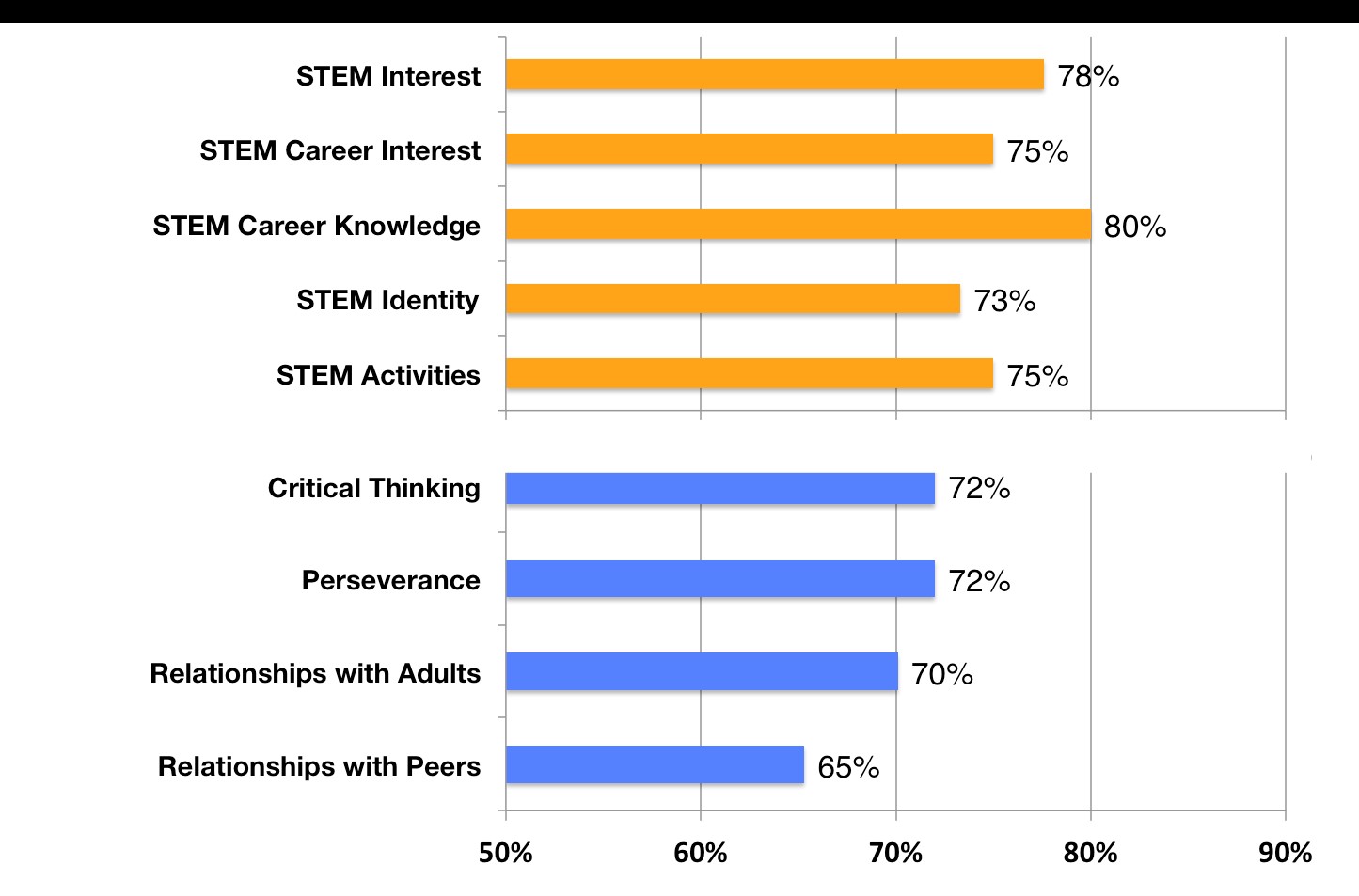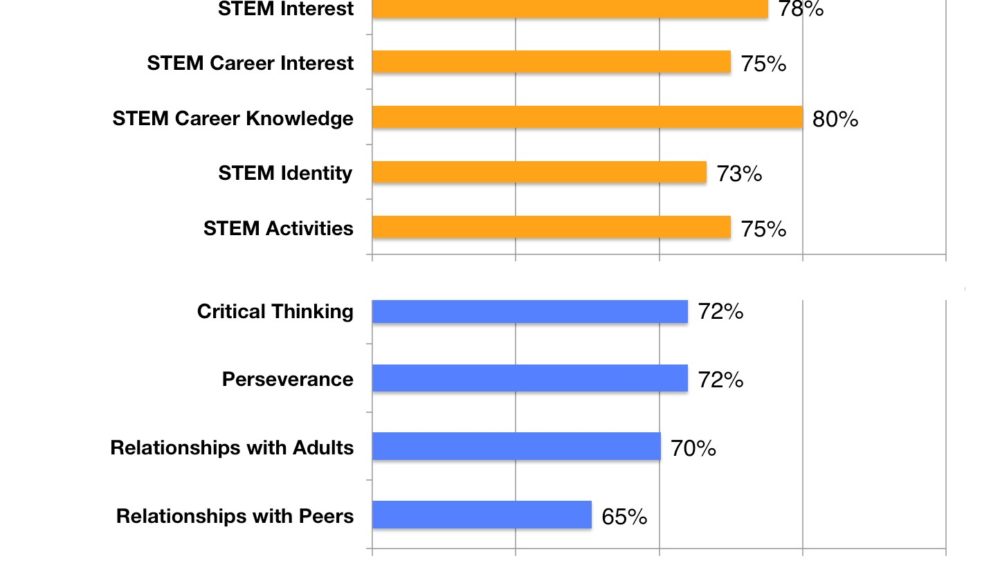By Dr. Gil G. Noam, Dr. Patricia J. Allen, and Bailey Triggs at The PEAR Institute: Partnerships in Education and Resilience.
 |
| Percentage of youth reporting positive change in STEM-related attitudes and 21st-century skills |
U.S. policymakers have prioritized boosting student interest in science, engineering, technology and math (STEM) to prepare the nation’s youth for an increasingly STEM-focused workforce. High-quality STEM afterschool programs are helping to fill this growing need. The Charles Stewart Mott Foundation and the Noyce Foundation (now STEM Next) played a critical role in helping states across the country to develop systems of support for these quality afterschool STEM programs so that they can share research and best practices.
To support this effort, we at The PEAR Institute (Partnerships in Education and Resilience) at McLean Hospital and Harvard University partnered with Dr. Todd Little and IMMAP (Institute for Measurement, Methodology, Analysis & Policy) at Texas Tech University to conduct one of the first large-scale evaluations to measure the impact of afterschool programs on students’ STEM-related attitudes, social-emotional skills, and 21st-century skills. Our report was made possible through a collaboration of researchers, practitioners, funders, and 11 statewide afterschool networks.
Nearly 1,600 students (grades 4-12), who were enrolled in one of 160 afterschool STEM programs selected to be representative of the U.S. as a whole, participated in this evaluation during the spring of 2016. The main question driving our research was to better understand if recent investments in quality STEM afterschool programming had any connection to improved student outcomes.
While the evaluation found variations across states, in general, participation in STEM-focused afterschool programs led to major, positive changes in students’ attitudes toward science (see figure). More than 70 percent of students reported positive gains in areas such as STEM interest, STEM identity, STEM career interest and career knowledge, and 21st-century skills, including perseverance and critical thinking. The evaluation was also able to answer our question about the connection between program quality and student outcomes: students participating in higher-quality STEM programs reported more positive gains than students participating in lower-quality STEM programs. Importantly, all programs excelled in one or more dimensions that we use to define quality.
The evaluation data supports the notion that investing in STEM program quality produces a greater return on investment from the perspective of students, and our future work will continue to drill down into the specific factors that make the most impact. We are happy to have data that policymakers can confidently use for decision making in the future.
To read the full evaluation, visit: https://www.thepearinstitute.org/publications. The evaluation can also be found at impacts.afterschoolalliance.org as part of the Afterschool Alliance’s new impacts database.

Comments are closed.